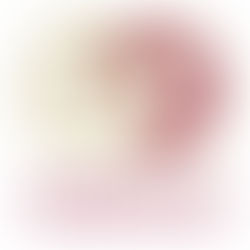Back to work: marquettes & large figures
It is time to get back to some serious figure building. It's something I've put off to after the summer break. During one of my tutorials before summer it was suggested to me to make more elongated versions of the large figures I did before. Hm, I've been mulling this over and just cannot imagine it to be working for me. So, best to make some small marquettes and try it out:

Oh, this is so not what I want to be doing. They are far to complicated especially if they will be heavily surface decorated. They look far to much like a collection of bones. I ended up with them as I was trying out to come up with longer limbed forms that can be turned and positioned in various ways. Luckily my course tutor was in that day and spotted them. He totally agreed that this was not the way to go but suggested I try eliminate all sharp angles and ridges and keep them as ambiguously biomorphic as possible.


This conjured up a mental image of the bubbles in lava lamps which have no angles. I'll try to keep this in my mind.
Instead of making more marquettes I decided to get stuck in with some large scale figures. I knew that I wanted to make another set of three large figures each in a differently coloured clay. So, I started with the most messy clay of all: PF690, Valentine Clay's red stoneware.
As before I coiled one half upside-down before turning it over after some drying time to firm it up. This works quite well technically but it is difficult to envisage the whole figure and finalise the right shapes and curves and planes. This is made even more difficult as part of the figure gets obscured by the foam and bubble wrap supports.


It is the first time that I've hand-built anything with this clay and I'm loving it. It is really soft and has a lot of tooth while also having enough internal strength to be able to build rather complicated freestanding elements with minimal additional support.


This is how far I've taken it for now. It gets wrapped up really well so that it the different moisture levels between the top and bottom halves equalise. Hopefully this will reduce any internal tensions which could contribute to stress cracks. When it is a bit firmer I will further refine its shape and its surface before I start my first decorating process involving slips. In the meantime I will test the compatibility of this clay with the uni white slip and see how sgraffitoing will work. I will also have find a compatible glaze. Currently I'm planning to combine Iznik inspired decorations with the look of traditional English slipware with a honey glaze. At the moment....
Inspired by the speed with which I managed to coil the red figure I went on to building one in black clay: Vulcan medium by Potclays. Again, a very nice clay to hand-build with as it has the right amount of grog in it to be able to give it the necessary internal strength without it being to rough. Any grog can be pushed below its surface by burnishing.



I tried to have a less complicated shape than the red figure and also elongating it. This is really difficult especially if I want it to be able to be positioned in more than just two ways. It remains to be seen if this is really such as successful shape when it is all finished.
Having noticed how hard it is to create interesting 'simple' elongated shapes I thought it was time to work on another set of marquettes. Not only will they help me to try out and figure out some issues in small (involving less time and clay) but they also serve as decorating test pieces for trialling patterns and techniques. Thus, this set of marquettes are also made using the VUM clay.

But working at this scale and in the colour it is difficult to develop 'tasteful' shapes that don't suggest body parts or results of bodily functions.

Oh well, I hope to overcome this by either polishing the xxxx (clay) or covering it in a white slip.
I'm hoping the white slip will adhere better to the VUM clay than it did to Valentine's black clay and not shell off. I also don't really like sgraffitoing these pieces as this black clay with its high level of grog creates burrs and I have problems creating clean lines.

It's good to test this anyway. Lucky that I was actually planning using a water etching technique to create my patterns on this black clay. Nothing is lost though as I'm learning for any future pieces I may want to make.

















